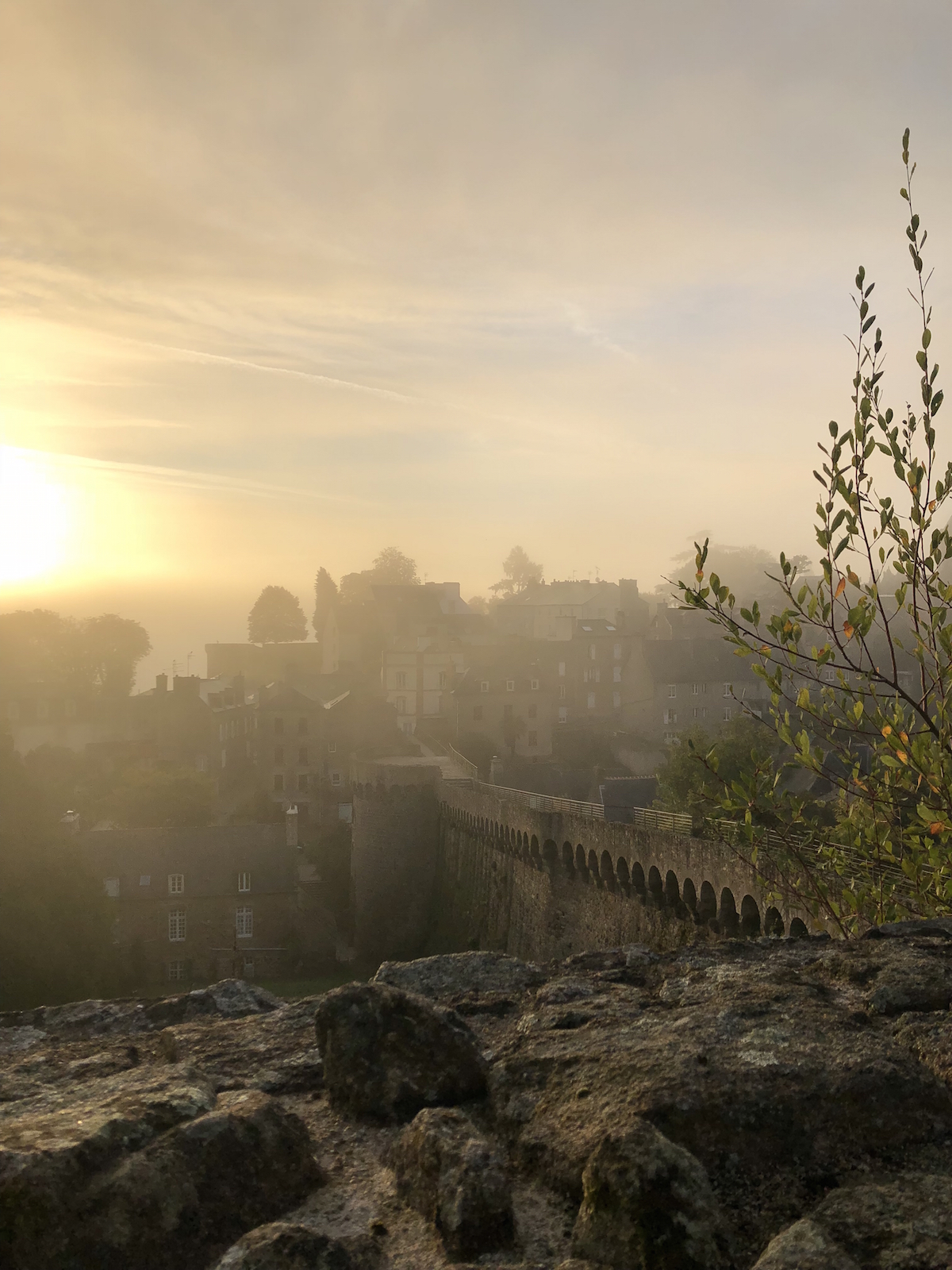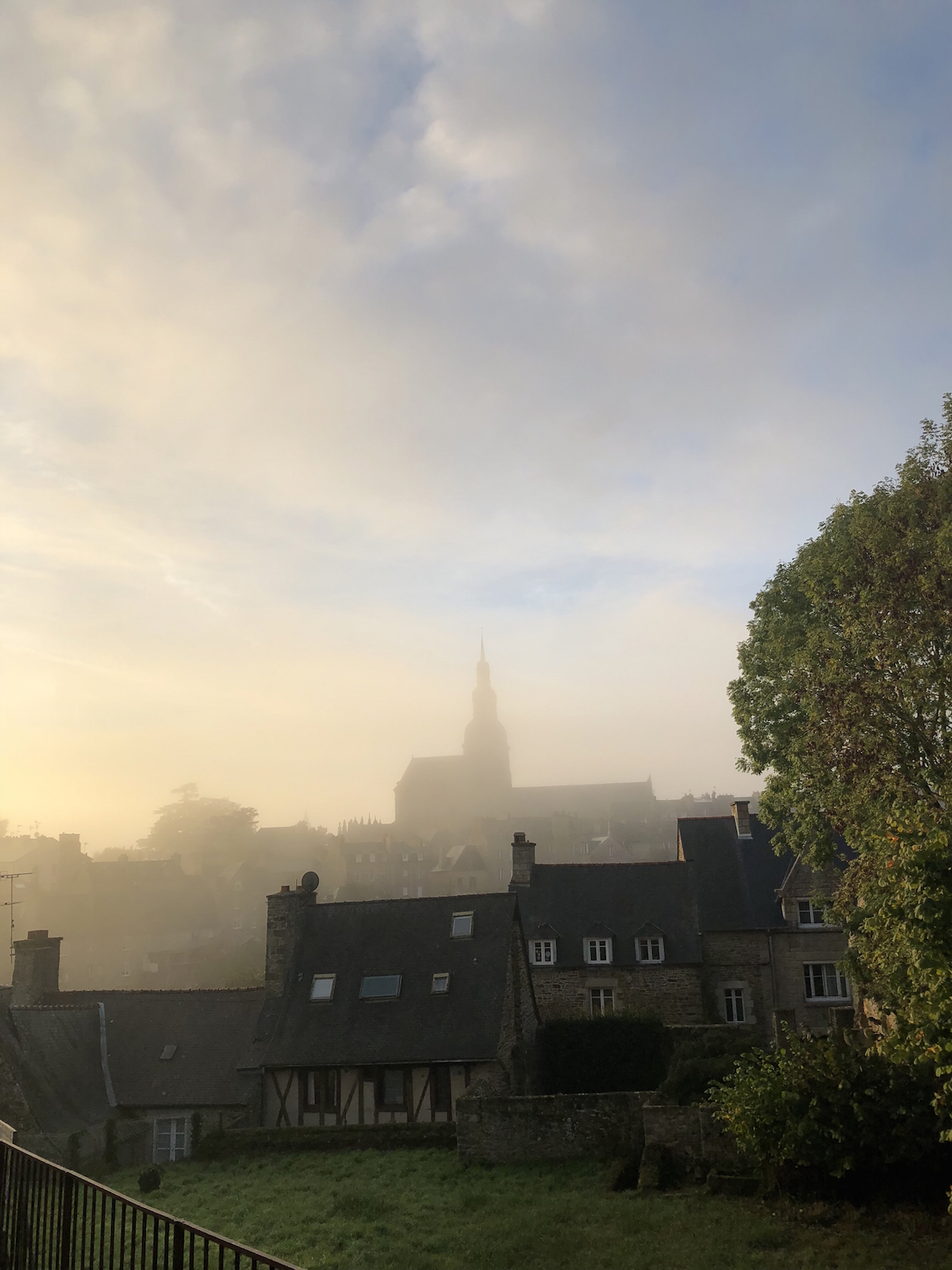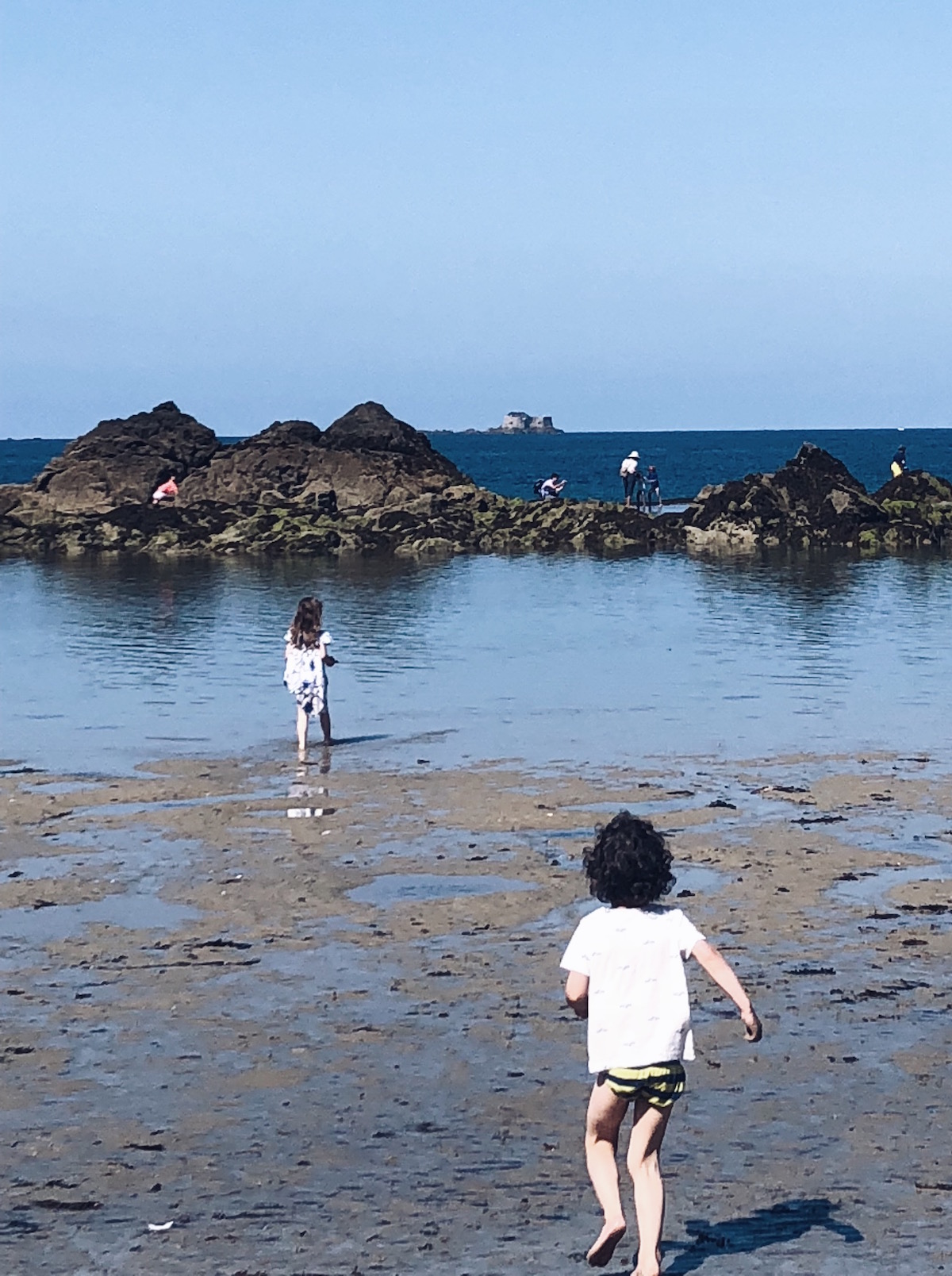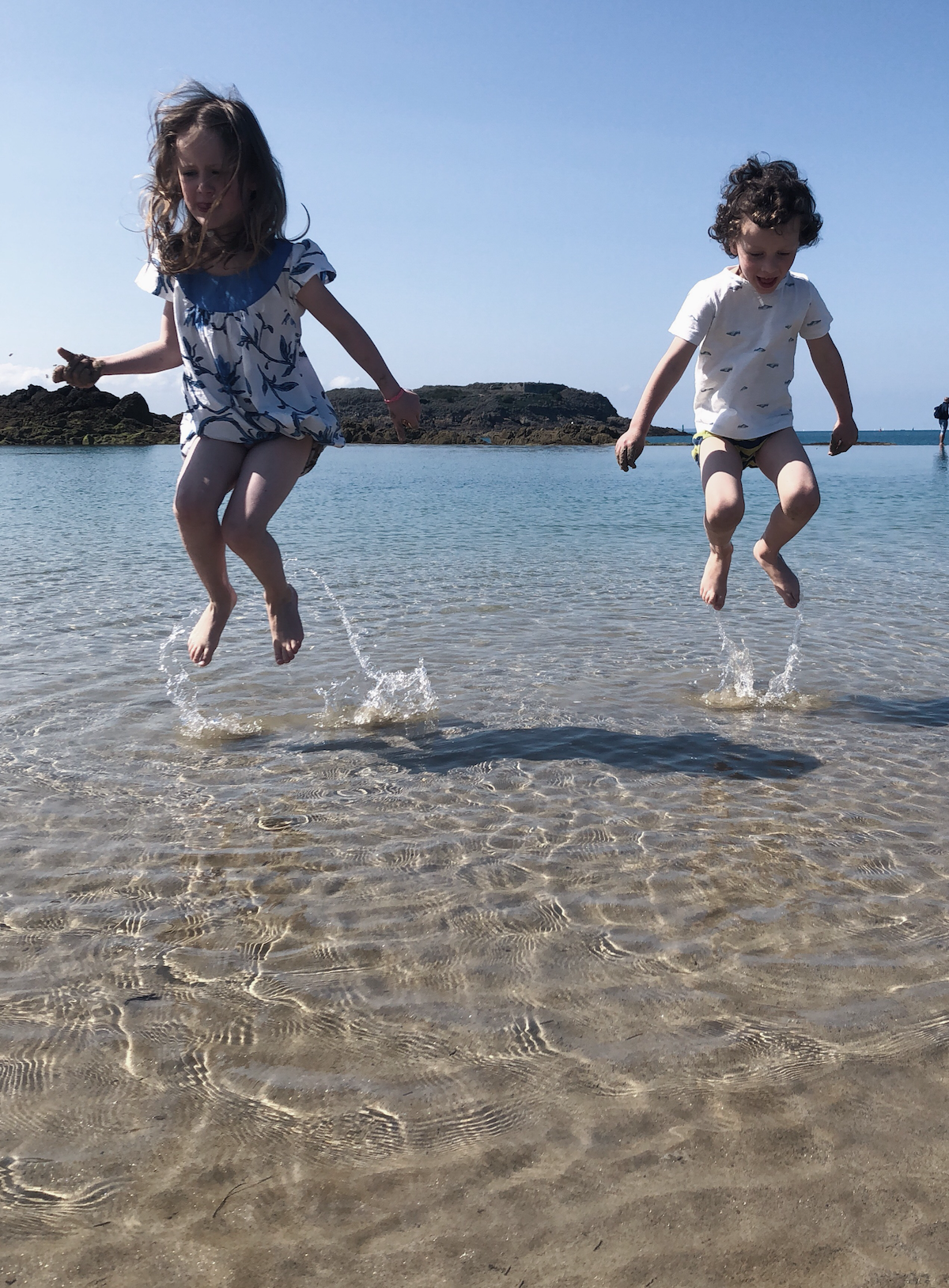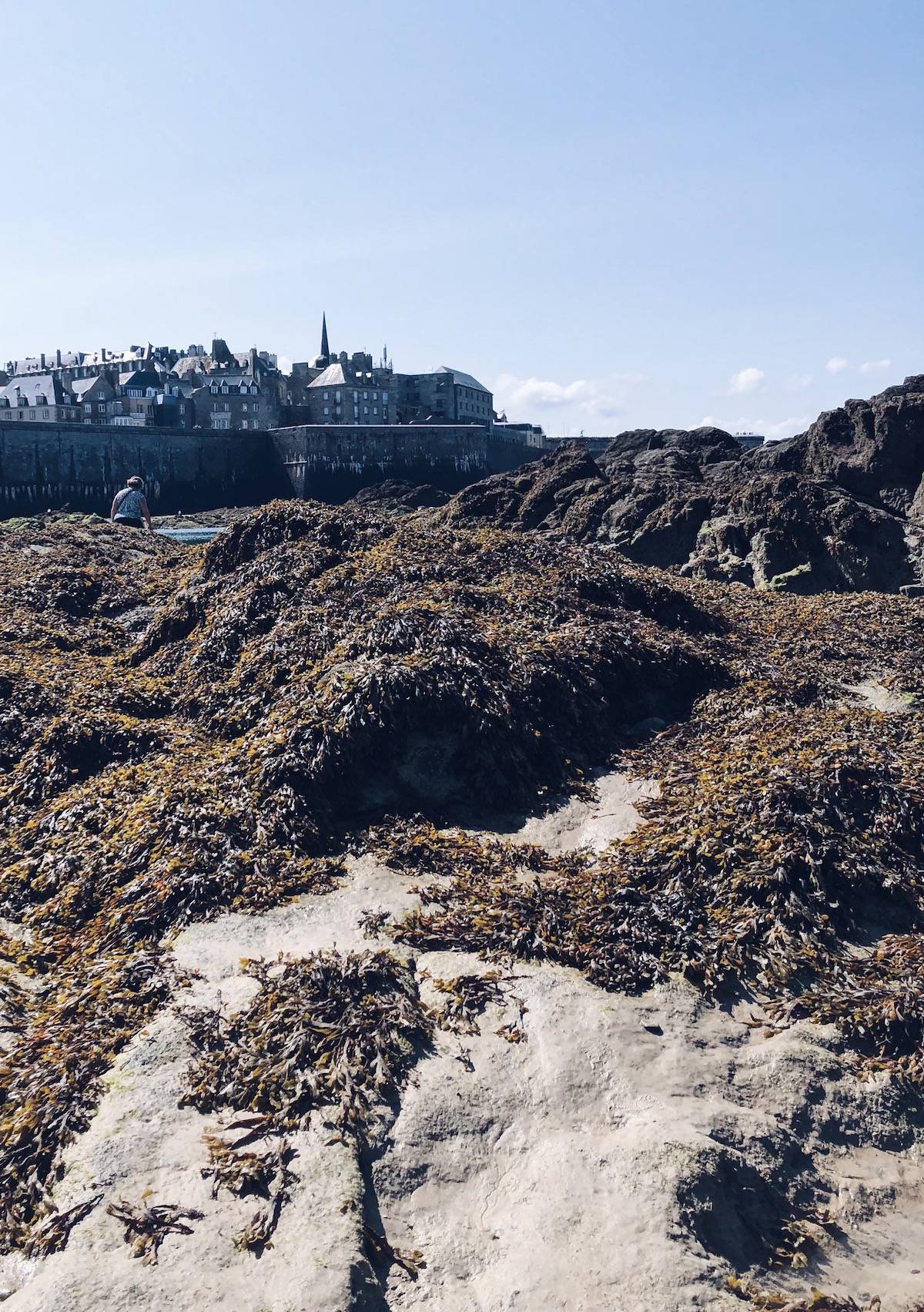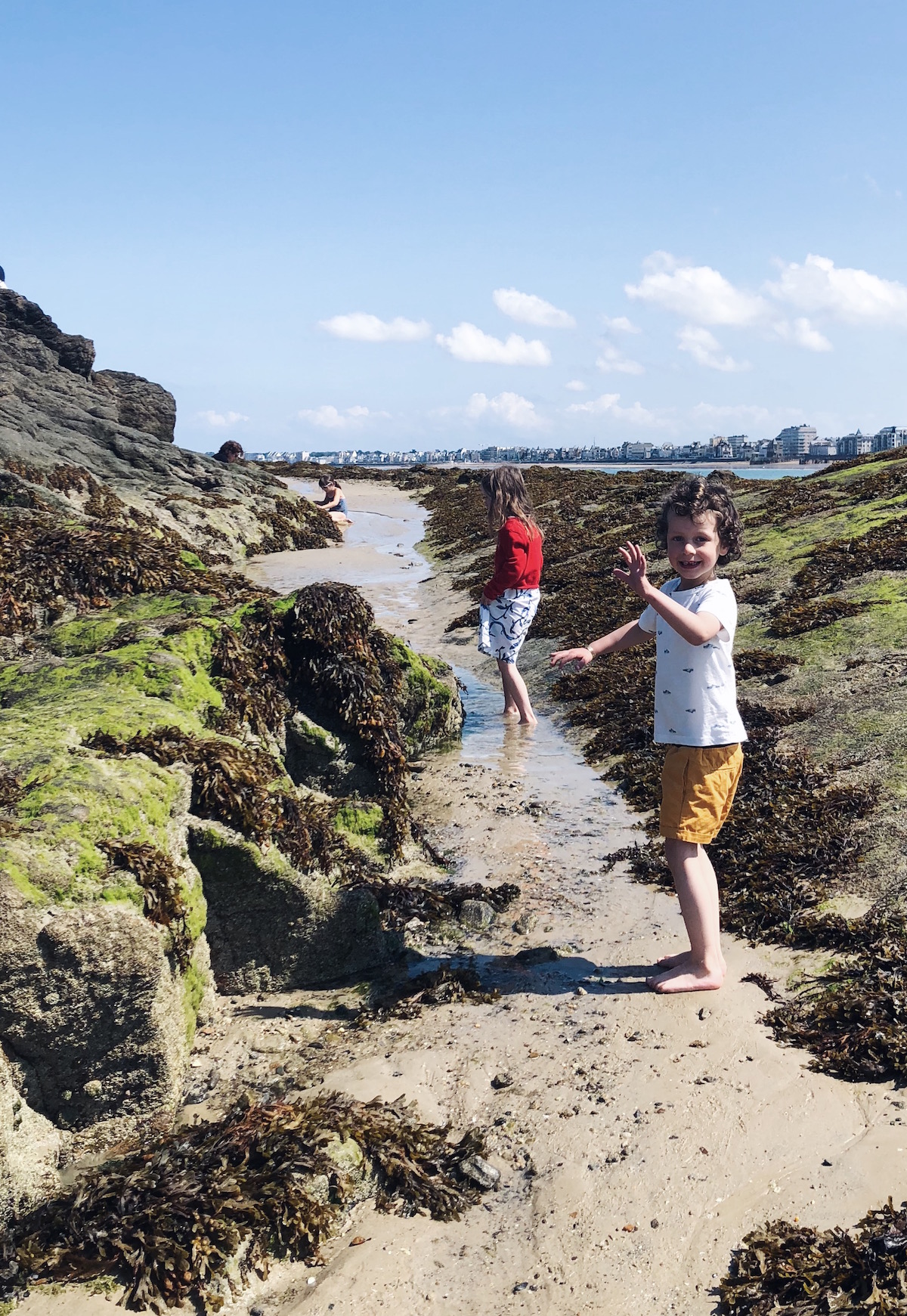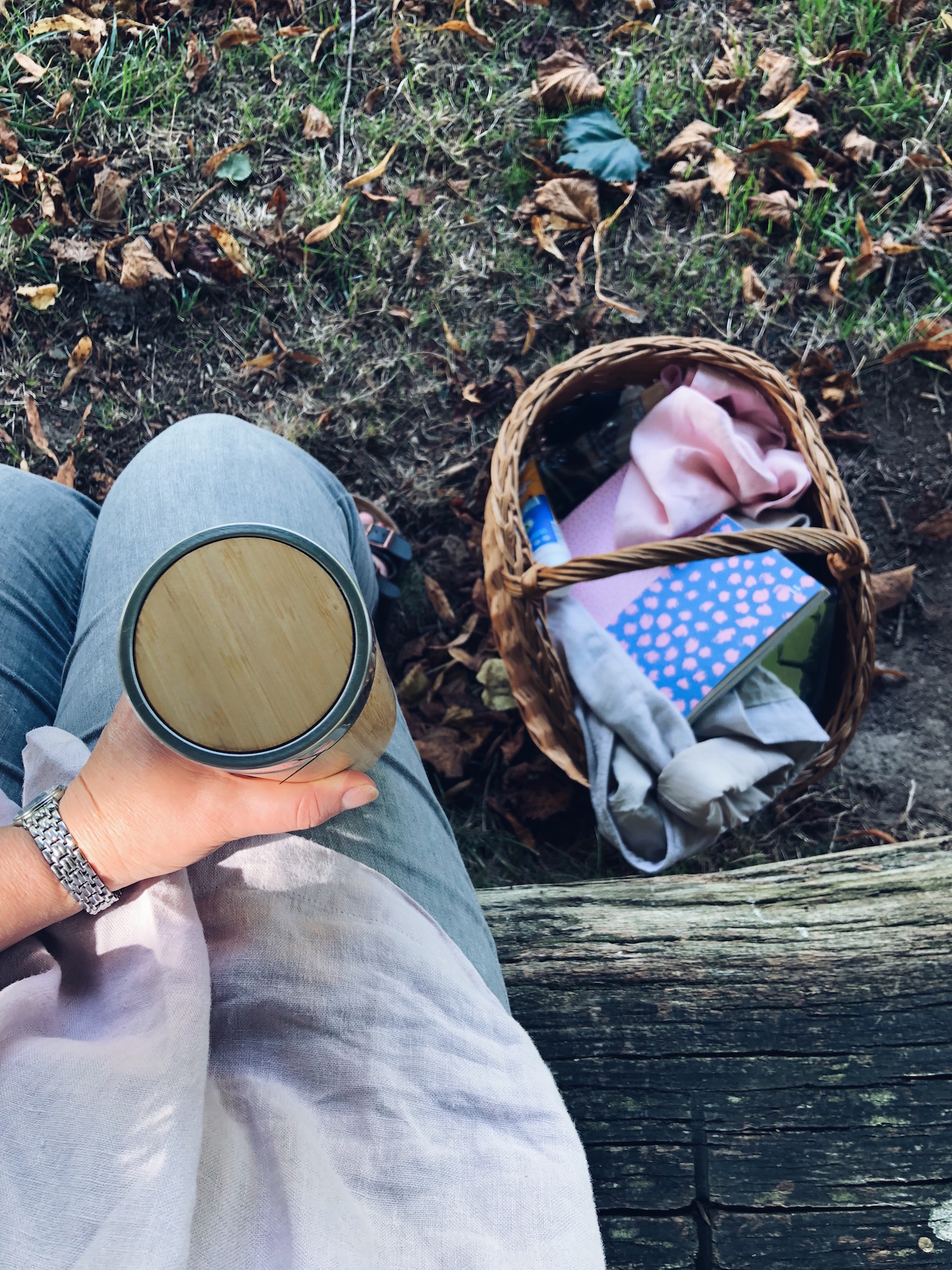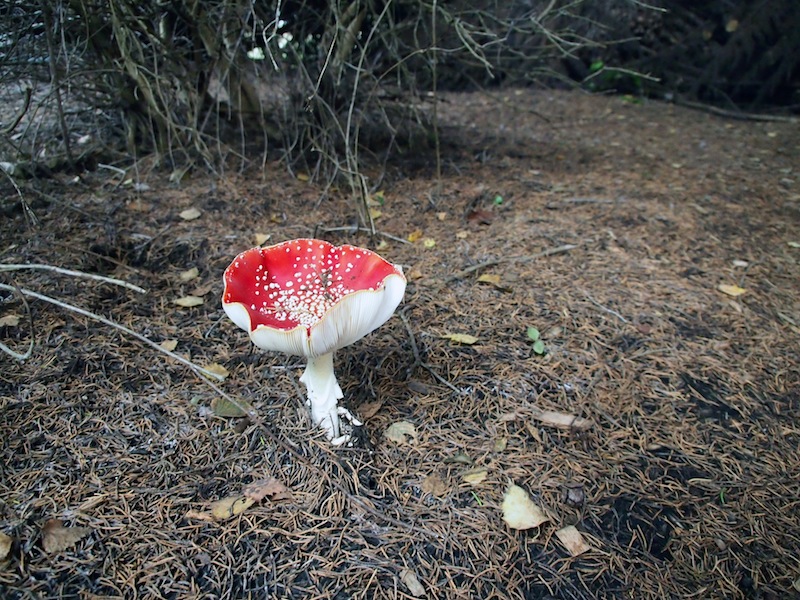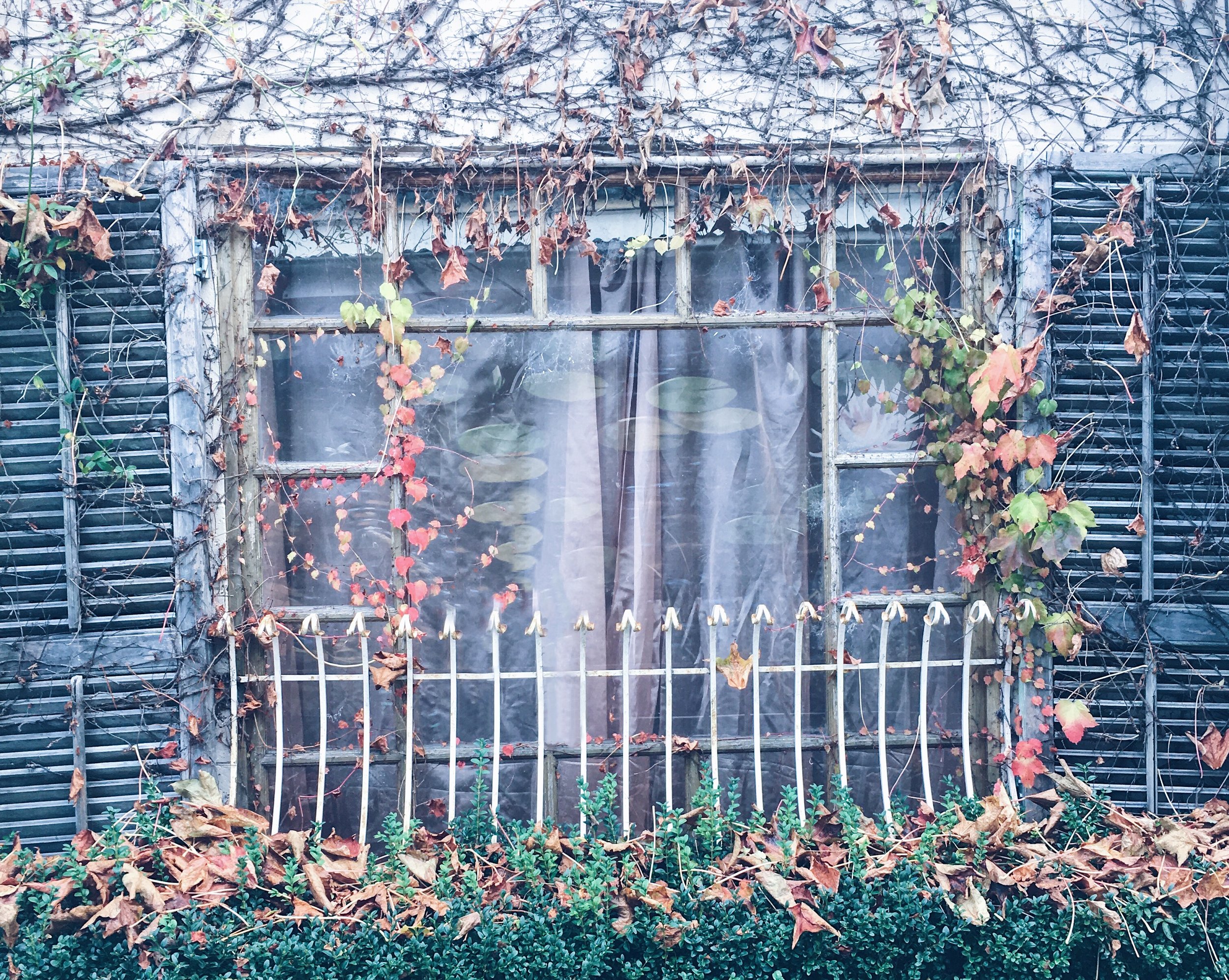
JOURNAL
documenting
&
discovering joyful things
Listening & noticing
We first noticed it on a Saturday night at the beginning of September: the unnatural quiet.
We were returning from the playground, where the children had spent a rousing hour-and-a-half making friends via a game of Ralph’s invention. It involved tossing his soft car-toy into the midst of a group of children who were spinning at top speed on a merry-go-round. If they managed to catch it, they’d toss it back, causing gales of laughter as Ralph ran hither and thither to pick it up like an eager puppy. Over time, the game evolved into chasings, with everyone chasing the one person who held the car, which they’d then pass to someone else if the mob of children got too near. A bit like under-six football, only with a lot less rules.
The children’s French language skills are coming along swimmingly, too. Mid-way through the game Ralph took a break in order to run up and tell me, “A girl said ‘bonjour’ to me, so I said ‘bonjour’ back.”
So, practically fluent.
We left the playground and sat down at a table outside a restaurant in the heart of town. I ordered us a tuna salad to share, and a glass of wine for me, and leaned back to enjoy the evening. That’s when I noticed it: the quiet. The town, which we had left two hours earlier bustling with the now-familiar throngs of thousands of tourists, buskers, market stalls and families, was now all-but empty. Two old men at a table nearby, smoking over pastis. The woman from the Presse across the square, leaning in the doorframe of her shop and watching the dusk. An old English sheepdog, asleep on the flagstones.
That was pretty much it, other than us, and it felt uncanny, to say the least. I said as much to the woman who brought us our salad. “Oui,” she said, her face widening into a broad smile, “c’est tres tranquil!” (“Yes, it’s very quiet!”). In the space of one afternoon, the school holidays had ended, and the crowds had melted away like mist in the sun. Now, I thought to myself, I am about to discover what life is really like in the village.
And one great lesson I am learning from life in this village, now that tourist-season has closed, is that there is a time and a season for everything, if only we learn to listen for it.
At first this felt restrictive because, in Australia, we are used to doing all the things, all the time. We eat when we can (hungry or not), and often on the go. We work all the time. Early morning. Late nights. Weekends. My husband brings his computer, iPad and telephone with him on holidays. We do our shopping at odd hours, slotting it around our long days. Pick up this on the way home from the office, grab that on the way home from school, shop for those at 9pm on a Sunday night, and order the rest online at 1am on a Tuesday after finishing a deadline.
I get my coffee take-away and eat at my desk, and our mealtimes are likewise scattered. For breakfast, Mr B grabs a banana for the car and snacks at work when he gets hungry. Often I forget to eat lunch and then pick at unhealthy anythings scavenged from the pantry all afternoon. I feed the kids their dinner and put them into bed, and then by the time Mr B gets home from work I’m often too tired to cook again. We are keeping Uber Eats in business.
By comparison, this is our life in the village:
* The church bells ring at seven in the morning. They don’t start earlier and the inference is, what person in their right mind would get up before seven in the morning anyway?
* On church-service days (including weddings and funerals), the bells start ringing 12 minutes before the hour, and continue all the way up until the hour, to give everyone in the village time to get to church
* The markets run from eight until one on Thursday, and that’s where everyone in town stocks up on fresh fruit, vegetables, meats, fish, cheeses and spices for the week. It’s seasonal, and you just have to roll with what’s growing (no California oranges or New Zealand kiwis here)
* The cafés and restaurants open at noon until about two for lunch, and seven until nine for dinner. Outside those hours most are closed and even if they do open, you can only get drinks
* I’ve yet to see a take-away coffee cup
* The shops don’t open before ten each day, and they are closed on Sundays and Mondays. “Sundays are family days,” my friend told me, with an expressive gallic shrug that seemed to add, “naturally”
As you can imagine, we came unstuck at first. I used up the last of our milk on a Saturday night and shock! horror! Had to wait until after ten on Tuesday morning to buy more for my tea. More than once, I failed to buy enough fruit and vegetables at the markets and had to go without for the rest of the week. (Going without is better than facing the prospect of picking through the genuinely-rotting ‘fresh’ produce in the local supermarket to find something edible. I’m not kidding: if the supermarket was a cartoon, there’d be little wiggly smell-lines wafting above it).
When we first arrived, my kids’ little tummies were used to having lunch at eleven or thereabouts, and we roamed fruitlessly from café to café, searching for something that was open before noon. We had the same problem when I wanted to take them out for dinner, but nobody would serve food until after their bed-times.
But as time has gone by we have slowly adjusted to these new rhythms and, somehow, they are beginning to make profound sense.
I take menu inspiration from what’s fresh at the market, rather than arriving at the supermarket with a ready-made list and very little idea of where my food is coming from. When it’s time for coffee, I take five minutes to sit at a cafe and people-watch while I sip, noticing and appreciating the taste… and the moment of peace.
Mealtimes are for proper meals, and we enjoy them thoroughly. But when mealtimes are over, we stop eating. I don’t snack any more, and I’m noticing the difference to my waistline. Sundays, when all the shops are closed, are for big cook-ups for the week ahead… or for long walks and picnics if the weather is just too good to resist.
It feels as though we are training our bodies to notice the rising and setting of the sun, the rhythms of the harvest, the turning of the globe and the changing of the seasons.
I am storing these life-lessons away, tucking them into my suitcase alongside the souvenir biscuit tins, vintage ceramic jelly mould and new winter coat that I also picked up here in France, in the hopes that they can be woven into my daily life when we return to Australia.
Trees and butterflies
We are searching out forests wherever we go, following paths that lead to unknown places. On this side of the world they are green and gloaming, not dry and dust-filled like the bush of my childhood. I like to kick my shoes off whenever I can, feeling the hum of the earth beneath my toes.
“Humph. Mum’s grounding again,” Scout complains. It is strangely liberating to remember, as I stand, that there are no deadly snakes or spiders lurking in the fallen leaves or hiding under rock and bush. Instead, we find…
conkers
chestnuts
blackberries, small and sweet
butterflies
crumbling ruins
whispering winds
acorns
wild apples
red-berried holly
rose-hips
(and once, something unseen that growled from behind brambles)
Inside these woods the fairytales I grew up reading seem much closer. It is easier to picture Hansel and Gretel or Little Red Riding Hood growing lost in these dark corridors, than in the brighter trees of my own remembering.
Of course, there is a hot, clean beauty to the Australian bush, too. The crunch of leaves and march of busy ants beneath my feet. The expansive shade of eucalyptus trees, whose baby leaves can be stretched and made to whistle a tune; bright flashes of bottle-brush in bloom; prehistoric, towering cathedral-ferns; and the eerie, dead-bone rattle of black wattle in the breeze.
Trees are trees and they love best to be together: when you find them gathered, on any side of the world, there is life and beauty to be found. But I am ever-drawn to these northern forests. I long for darker, cooler, deeper woods, and I hope I never quite unravel all of their mysteries.
I have a little theory that I like to play around with in my head sometimes, in that half-awake time in bed before sleep. It is undeveloped and unsubstantiated, truly just a theory, but I find it oddly comforting.
(I wonder if I subconsciously came up with this theory as a way of excusing or apologising to myself and my parents for not feeling more in love with the landscape and climate of my homeland, Australia. I have never felt properly at home in it. This seems unfair to a land that has given me so much, and that is so intrinsically beautiful, and I can’t explain it in any logical sense, which might explain the theory.)
It goes a little something like this…
Every year in autumn, millions of monarch butterflies fly thousands of kilometres south from the US-Canadian border to Mexico, only to head north again come spring-time. The fascinating thing is that given the life-span of a butterfly, five generations live and die in the interim. When it’s time to embark on their journey home, not a single butterfly alive has done it before. There is no-one to lead the way, not even anyone left to tell them about it. And yet their sense of direction is so accurate that every year they return no only to the same area, but often even to the very same tree that once was home to their great-great-great-grandparents.
The butterflies navigate by using a sophisticated combination of the sun’s position in the sky, and their own biological clocks. This is the idea of cellular memory, something deeper and more physical than our neurological memories: memories or associations that are imprinted, instead, into our very DNA.
If you speak to many Aboriginal or Torres Strait Islander Australians, you will hear something along similar lines, although often using different language. The land belongs to them and they belong to the land, and no amount of dispossession and destruction at the hands of us immigrants can change that deep reality.
But I am not Aboriginal or Torres Strait Islander, and I fear this hot and harsh and beautiful land does not belong to me, nor I to it. I am like a monarch butterfly, turning my antennae toward the homeland of my grandparents. Surely, in all the hundreds and thousands of years that my ancestors lived and loved on the other side of the world, right up until two generations ago… surely there is something of that in my DNA that could explain why I feel such a powerful and incessant longing to go north?
Or at least, that’s my theory.
The magic beach
There are cliffs at the edge of the horizon, behind the rocky island, so pale and misty they could be a mirage. I wonder aloud at what point the coast curves around, until somebody tells me that no, that is Jersey. The day is so clear that we can see all the way to the British Isles.
We arrive just as the tide is drawing out, unaware of how lucky we are. Long stretches of golden sand, still rippled with the marks of the waves, unfold under our feet. We explore rock-pools, a waterfall, an infinity pool built into the ocean wall. Gingerly we step between barnacles and in and out of patches of seaweed, making our way to a fort and prison on a hill. (Only a few hours later, there will be no beach at all, and the fort will become a wave-battered island.) Here are ancient walls, hidden rooms, and breathtaking views across to the castle walls and the old town.
I picture all of this under water in only a matter of hours. The paths, the steps, the hewn-stone alcoves... and then I think about Atlantis, and I wonder...
The children start the day in long pants and jumpers and slowly shed layers as the sun grows in strength, ending up gleefully racing across the sand and through the shallow waves in just their underwear. We plan to visit for two hours and stay for seven instead, barely making it to the last bus home, tired, sunburned, and overflowing with happy memories.
As if to complete the cliché, seagulls circle above the castle towers, calling. I feel joy.
Pirates! For centuries, the treacherous coastline, hardy sailors and impregnable castle walls made our magic beach a haven for pirates. Think of every swashbuckling Treasure Island story you have ever heard: yo ho ho and a bottle of rum, and all the rest. Ruthless crews would lay in wait for English, Dutch and Portuguese ships carrying gold, spices and other precious cargo from the Caribbean, then hide their treasure away in the many secret harbours and hideaways that pepper the cliffs and coves. In the 17th century the King of France legalised the pirates (for a share of the profit), and so they became known as corsairs, privateers pillaging on behalf of the Crown. They were so feared that British mariners called our beach 'the Hornet's Nest.'
Ralph chooses a random spot in the sand and starts digging. "Soon I'll find treasure," he announces, with supreme confidence.
This is a place rich in history and beautifully, sometimes brutally, ruled by nature. As we clamber over the still-wet rocks, Scout starts chanting to herself softly, "At our beach, at our magic beach..." from a well-known children's book we have at home. The book is about a beach that is beautiful and magical in its own right but, on every second page, the children in its pages imagine something more: knights battling dragons; an exhilarating underwater race on the backs of seahorses trailing pearls; smugglers, sneaking along the rocks at dusk.
The book is called Magic Beach.
Summer picnic
We spread out our blanket in the shade on the grassy flat inside the ruins of the castle. All around us, birdsong. The paper-rustle of the breeze in the trees. The occasional, distant hum of a car bracing itself to climb the hill on the other side. And centuries. The sound of centuries. The vibrations of a thousand years, deeper than human hearing but as real as that bumble-bee we saw, drunk on pollen, staggering from borage to blackberry and back again.
I take off my shoes and the grass is soft and warm beneath my toes. I want my body to touch the hum of the centuries, to see if they will touch me.
"Are you grounding, Mummy?" asks Scout. That's my girl. The children kick off their shoes, too, and race about amid the wildflowers, shooting corks at each other from toy wooden crossbows. We pick flowers to press and, when the sun gets too hot, retreat into the shade for lunch. It is simple fare, but so, so good. Baguette from our favourite boulanger in town, soft cheese, pear and apple. And because I am still not entirely French, a thermos of hot tea.
I stretch out on my stomach, kicking my bare feet in the air behind me, and read to the children aloud from Lunch Lady magazine. A story about the romance of caravanning in Australia. Scout says, "Let's stay here for the whole day," and I agree. Ralph discovers he can carry the corks for his crossbow inside the fat curls on his head.
There is a plaque set near one of the ruined towers of the castle, that tells a little of the history of this place. It is uncharacteristically poetic for a plaque, and so beautiful that I search the small-print for an attribution of some kind. I feel as though I'm reading Victor Hugo, or Walter Scott, rather than someone from the Bretagne Tourism Office, circa nineteen-eighty-something.
I'll share some of it with you.
"For over a thousand years, the mighty castle walls dominated the banks of the river and echoed to the clash of iron and the cries of warriors. Now all is quiet on the deserted peak. Nothing is to be heard but the songs of the shepherds and the birds. The old feudal giant is nothing more than a meagre skeleton and each winter carries off a fragment. Only brambles and wild flowers inhabit the gaping ruins. Corn and apples ripen the orchard that once was a place of arms. Only the dew from heaven and the labourer's sweat now water this earth which warfare once drenched in blood and tears."
All the sunrises and all the sunsets in all the world
For the longest time, it felt as though I was alone in a post-apocalyptic world… all empty streets and orange-tinted street-lights and not. one. sound (not even crickets)… as I watched the moon turn slowly pink and Mars shone fiercely bright as only the god of war could do.
Watching the blood moon eclipse unfold through the lens of my camera, the tall conifer trees at the back of the council building across the road gave the impression that we were somewhere rural, in the south of France maybe, rather than where I actually was which was a bus stop in an inner suburb of Melbourne, Australia. This impression was helped by the fact that no matter how hard I tried, there was so little light in the sky aside from Mars, which dominated everything, that every picture I took came out blurry, a little like a Van Gogh landscape with all those conifer trees.
I shivered, adjusted the rug I’d draped around my shoulders for warmth, and moved the camera tripod a little to the right to position the moon between the trees again.
Blood red. It sounds ominous, but it was the most beautiful sight. The cold moon washed red by all the sunrises and all the sunsets in all the world, happening at that exact moment. My moon, and yours. I stood there no longer alone, thinking about all those sunrises and sunsets and YOU in them, waking to coffee or driving home from work or sipping wine by the beach or making the beds or walking the dog or heading out with friends… all those things you were doing at sunrise or sunset in Auckland or Amsterdam, and everywhere in between.
Not alone. “Can you see it yet?” a woman in a white dressing-gown and ugg boots raced across the road, face sky-ward, while a man followed after her, calling out. A child and a grown-up, also in dressing-gowns, hurried up the street I was on, pointing to the sky. A car came around the corner and the driver saw us, pulled over, turned off the headlights, and got out to watch.
We all stood in companionable silence for a minute or two, and then the sunrise-sunset-moon slipped behind the conifers, and everyone drifted away, back to their warm homes. Somewhere, a magpie started to sing. I took a last sip of my thermos tea, packed up the camera tripod, and turned for my own home, too. Alone in the brightening sky now, fierce as ever, I’m pretty sure Mars shook his fist at me.
A walk in the forest
A walk in the forest is what I'm longing for right now. Somewhere with a gloom that is friendly, like a hug from nature. With fallen leaves and old sticks and bark and soil underfoot, and a green canopy overhead where daylight filters, dappled and maculate, soft as rain.
Deep, deep down below, the trees will be talking. Sharing secrets, nutrients, nurture.
I will explore paths long-untrodden, peer into corners and around ancient trees, search for friends from the pages of old stories, and make up new stories in my mind.
Botanical project: leaf skeletons (non toxic)
Whenever I discover a leaf skeleton in the garden it feels like a little piece of magic. Rare good luck, like finding a four leaf clover or seeing a double rainbow. The circumstances for nature to create a leaf skeleton have to be just right: damp enough for the fleshy parts of the leaf to decompose, sheltered enough (probably under other leaves) to encourage microscopic organisms to eat away at those leaves, and somehow exposed at just the right time for me to find the leaf while all those lovely veins are still in place, before it breaks or blows away.
I love to send leaf skeletons as gifts in my mail. They are something special, precious, a memento from my garden or a walk I've taken that is tinted with enchantment. But because they are so hard to find, I wanted to learn how to help nature along, and make my own leaf skeletons. Turns out there are several ways to do it, following processes that range from a couple of hours to a couple of weeks, and using everything from water and pantry ingredients to caustic substances requiring rubber gloves and goggles, and straight-up bleach.
I have tried three of the non-toxic methods, and am here to share them with you today.
Step 1: Pick & prepare the leaves
No matter what method you use, some steps to making leaf skeletons are always the same:
Choose your leaves: for best results, choose leaves that have a strong vein system. Tougher, more waxy leaves have better results than softer, younger leaves
Clean the leaves: gently rinse them in a bowl of water, and wipe any dirt or mud away with a soft cloth. If the dirt is stubborn, use an old toothbrush to (gently) scrape it away
Step 2: Choose your method
How you choose to make your leaf skeletons will depend on the time you have available, the materials you have in the cupboard, and how willing you are to work with potentially caustic substances. Here are the pros and cons of the three methods I'm sharing today. If you click on any of the methods below, you'll jump straight to the relevant instructions.
Pros:
* Completely safe
* Nature's method
* Gentle on leaves
Cons:
* Takes several weeks
* Gets gross and smelly
Pros:
* Completely safe
* Easy to find ingredients
* Relatively fast results
Cons:
* Can be rough on leaves
Pros:
* Supposedly faster
* The Internet loves this method (lots of tutorials)
Cons:
* Dangerously caustic
* Hard to find ingredients
* Can be rough on leaves
Step 3: Make your leaf skeletons
a) Water method
Take a shallow dish (like a baking dish) and fill it with water. The dish should be ceramic or glass, not metal (I don't know why. Maybe it's to avoid rust, or has something to do with the minerals or chemicals in metal?). Place the leaves in the dish (it's ok if they're on top of each other) and weigh them down with something heavy to ensure they stay covered with water.
Leave the water to sit for between three and four weeks. It will get murky, and start to smell really bad (like a vase when you've left cut flowers in it for too long).
Take one leaf out of the murky water, place it on a flat surface, and gently try to brush away the gunk and membrane from the leaf. Use an old toothbrush (softly), or a paint brush if you're worried the toothbrush will break the leaf. If it's too tough, put the leaf back into the water and give it a few more days to soak.
Rinse the leaf in clean water. If necessary, continue brushing away any remaining pieces of the pulp while it's in the water. Once you're done, lay it on a paper towel to dry.
b) Bicarb soda & baking powder method
Dissolve equal parts bicarbonate soda and baking powder in a saucepan of water. I used one tablespoon of each, and approximately a litre of water.
Place your leaves into the pot, and bring it to the boil. Reduce to a simmer, stirring it gently from time to time. The water will froth up, and will get brown and murky.
Watch the leaves until they have softened, and you think they are ready to clean away. This could take several hours (I was using hardenbergia leaves and it took about an hour and a half). If necessary, top up the water from time to time to ensure they leaves remain covered.
Take the leaves out of the saucepan and place them into a shallow tray of clean water. Using and old toothbrush, gently try to brush away the gunk and membrane from one leaf at a time. If the leaf is too fragile, use a paint brush instead of a toothbrush.
Once you're done, lay the leaf on a paper towel to dry.
c) Washing soda method
Note: washing soda is not the same as baking soda. Washing soda is sodium carbonate: it's a powerful cleaner and non-toxic, but is highly caustic and definitely not edible. Wear gloves and goggles while working with it, and try not to inhale any dust that might float up when you stir.
In a saucepan, dissolve 3/4 cup of washing soda in about one litre of water.
Place your leaves into the pot, and bring it to the boil. Reduce to a simmer, stirring it gently from time to time. The water will froth up, and will get brown and murky.
Watch the leaves until they have softened, and you think they are ready to clean away. This could take several hours (for some reason the camellia leaves I was using took forever - like about six hours - but general consensus on the Internet is up to two hours). If necessary, top up the water from time to time to ensure they leaves remain covered.
Take the leaves out of the saucepan and place them into a shallow tray of clean water. Using and old toothbrush, gently try to brush away the gunk and membrane from one leaf at a time. If the leaf is too fragile, use a paint brush instead of a toothbrush.
Once you're done, lay the leaf on a paper towel to dry.
How to make washing soda
If you can't find washing soda at the shops, try this easy at-home process.
Pre-heat your oven to 200C (400F). Spread two cups of baking soda evenly on a large baking tray, and place it in the hot oven for about half an hour. You'll know the transformation has happened when you look at the powder: washing soda is more grainy and dull than baking soda, and when you stir things around (not with you fingers!) you'll see it doesn't clump together. If you're not sure, grab some baking soda and put the two side by side, to see if they look different.
Step 4: Press the leaves
Leave cleaned leaf skeletons in a warm, sheltered place to dry for approximately one hour.
Once you are sure the leaf is completely dry, place it between two paper towels and store it under a heavy book until you are ready to use it.
Step 5: Decorate
I prefer to leave the leaf skeletons their natural colour, but you can absolutely play with other decorative ideas if you wish. After all the pulp has been removed but before you dry and press the leaf skeleton, you could place it in bleach to whiten it, or in food colouring. Alternatively, once dried and pressed, you could carefully paint the leaf skeleton (metallics look really great!).
That's it! If you decide to make these, let me know how you go. I'd love to see how they turned out, and learn what you think of the process.
ps. I've been working on a little video to show people how to make leaf skeletons using Method 2 (the baking powder and bicarbonate soda method), as part of a "botanical crafts" course I'm developing. The video is not finished yet but, in the meantime, I've created a printable tutorial using screen-grabs from the video to give you a more visual step-by-step guide, if you think that will help. You can download that tutorial here:
The Most Beautiful Letter You Have Ever Written
Come join me and a host of gentle, creative, like-minded people in my five-week letter-writing and mail-art course, delivered entirely online. This course is all about creativity, personal connections, and spreading joy to others through the old-fashioned postal service. Learn more or join in here.
8 autumn-winter plans
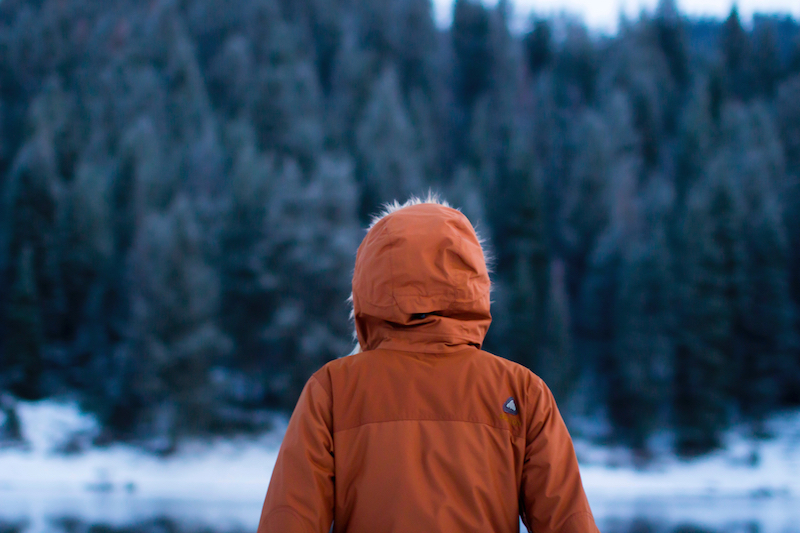
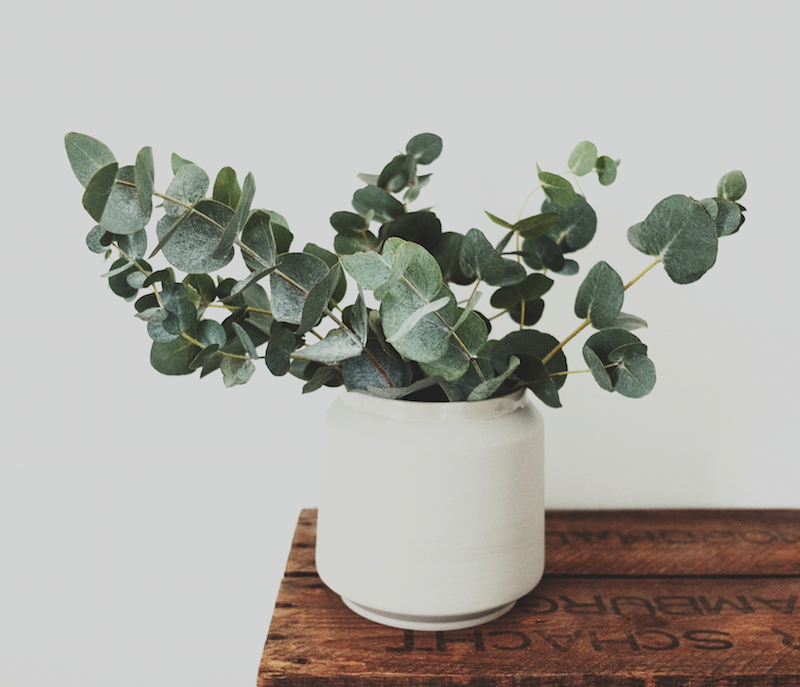

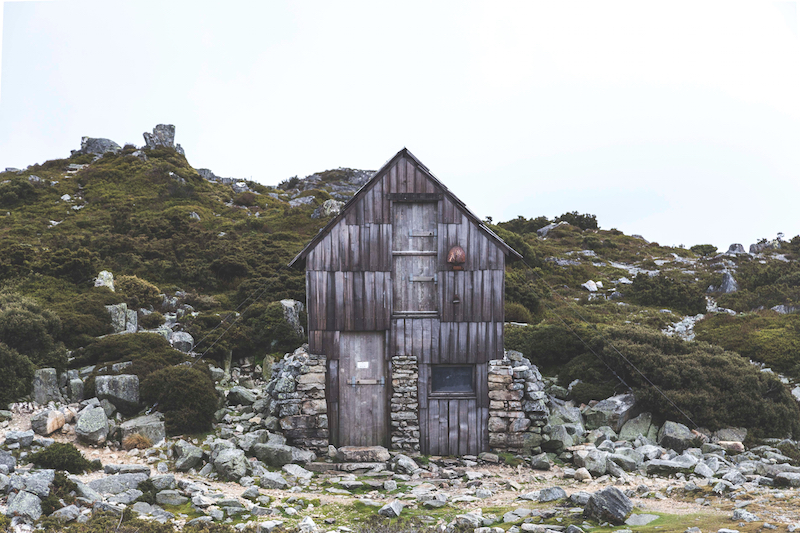
It's no secret that I love winter. I am no friend of heat and humidity, but I love the sting of cold on my cheeks, and the sight of my breath in the air in the morning.
I also love crocheted nanna-rugs, hot chocolates, bed-socks, mac-n-cheese, and flannel shirts. I like hiking up mountains or along city streets without breaking a sweat, the smell of wood fires after dark, candles at dinner-time, and lazy bubble-baths on weekends.
After what felt like the longest summer in the history of all the summers, we are finally seeing the start of autumn. So, just in case this is also the shortest winter in the history of all the winters, I have made some plans to make the most of the cooler months.
1. Learn how to bake bread really well. I've enrolled in a bread-making class at Abbotsford Bakery next month that I'm really looking forward to
2. Take the children to see snow
3. Go bushwalking. Now that the hot weather has gone and the snakes are asleep, I want to get back out among the trees
4. Forage for wild mushrooms in the pine forest. There are guided tours that take you on these foraging missions, to be sure the mushrooms are actually mushrooms, not toadstools. I've been wanting to do this for ages, but nobody wants to come with me. Will you?
5. Take better care of my skin. One of the down-sides to winter is the damage all that dry air and internal heating does to your skin. When I lived in New York, I was great at using scrubs and moisturisers to protect my skin. I'm older now so it's even more important that I make the effort
6. Dig, prune and nurture. I keep a seasonal diary to remind me what needs to happen in my garden. In the coming months, that will mean formwork pruning of some plants, heavy cutbacks to others, sowing some seeds, fertilising, aerating the soil, and applying a thick mulch to protect it
7. Make friends with the slow-cooker. I tell myself I'll do this every year. This is the year!
8. Rug up and have a winter picnic. I'll pack thermoses of hot chocolate or tea, knee-rugs as well as picnic rugs, beanies, and candles or possibly a little campfire. We will find somewhere pretty, and our picnic will look like this
How about you? What are your plans for winter? What should I add to my list?
Image credits: Daniel Bowman // Siebe Warmoeskerken // Annie Spratt // Samuel Scrimshaw
Animals in sweaters
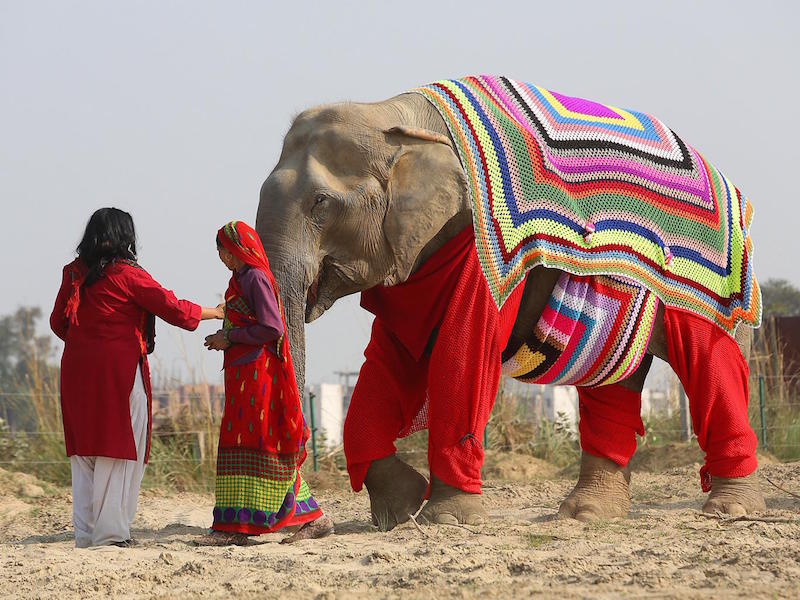
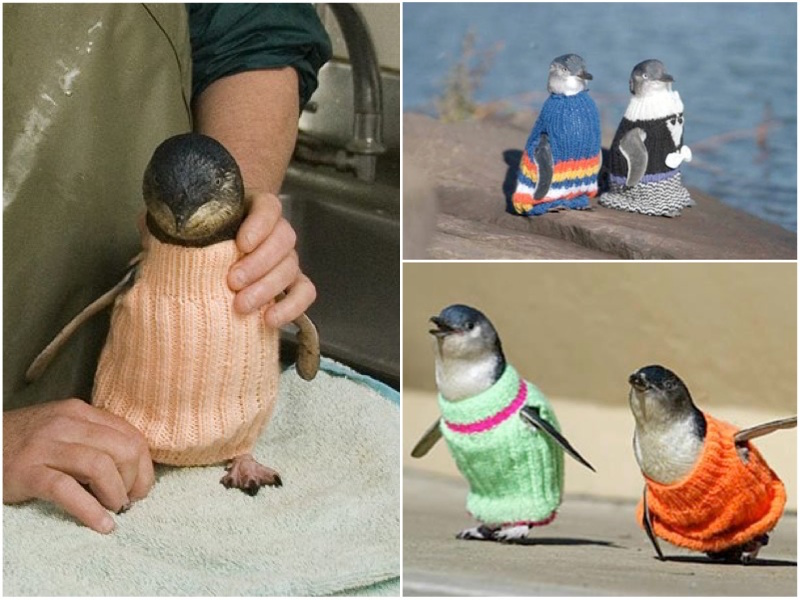
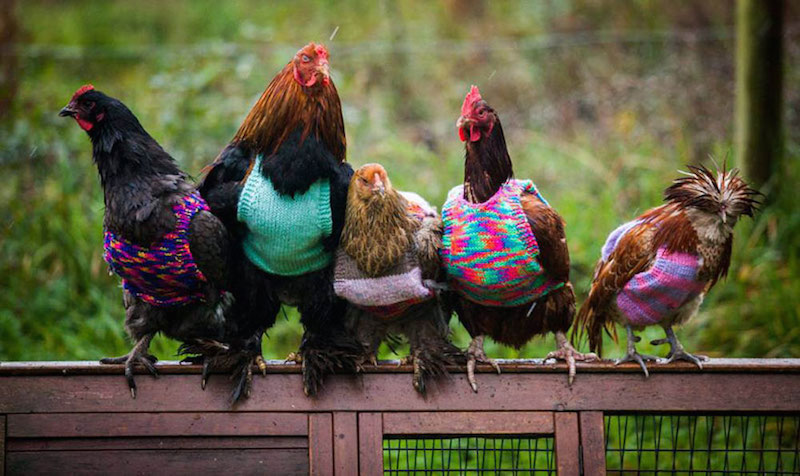 I am super tired this morning, and entering the week already exhausted is never fun. I was going to (try to) write you something insightful and meaningful, but my brain just won't cooperate. So instead, I decided to share something altogether lighter: animals in sweaters!
I am super tired this morning, and entering the week already exhausted is never fun. I was going to (try to) write you something insightful and meaningful, but my brain just won't cooperate. So instead, I decided to share something altogether lighter: animals in sweaters!
The chickens, from Cornwall in the UK, are wearing knits to protect them from cold temperatures. They are retired battery hens who, after spending a lifetime in cages, are not able to acclimatise to weather fluctuations.
The elephants are from a conservation for formerly-abused elephants in Mathura, India, and local villagers knitted these sweaters when they were warned that temperatures were forecast to dip to near-freezing, making the elephants vulnerable.
The penguins are from an ongoing conservation project on Phillip Island, Australia. For penguins in rehab that have been covered in toxic oil from spills, the sweaters keep them warm and prevent them from trying to clean the oil off with their beaks.
Every one of these groups of animals was made sick or vulnerable because of something that humans did to them. Thankfully, humans are also mobilising to protect and care for them. I feel better about Monday already. I hope you do, too!
ps. I'm launching a big giveaway of beautiful things on Instagram today. Pop on over if you'd like to enter!
Talking trees
 Yesterday I listened to this TED Talk by Suzanne Simard that blew my mind. Actually first I listened to Suzanne being interviewed on the TED Radio Hour (here's the transcript), then went across to listen to her whole talk.
Yesterday I listened to this TED Talk by Suzanne Simard that blew my mind. Actually first I listened to Suzanne being interviewed on the TED Radio Hour (here's the transcript), then went across to listen to her whole talk.
It sent me reeling, and I spent the rest of the day thinking about it over and over again, and pondering the implications.
Suzanne is an ecologist, and a few years ago she made the astonishing, world-changing discovery (which anyone who has read the Narnia books already secretly suspected) that trees in a forest talk with each other - and share with each other, and nurture each other - using a massive subterranean fungal network attached to their roots.
If one tree comes under attack, from say bugs or something, it can communicate this to the other healthy trees around it and they increase their defence systems in preparation.
If a tree is in need of more carbon, nutrients or water, it can communicate this to the other trees, and trees that have excess of any of these pass them along, to help the struggling tree survive.
Bigger, older trees become "mother-trees" and they nurture their "young," the seedlings and saplings in the under-story. They pass along nutrients, carbon and water, and even adjust their own root systems to make room for the younger ones to grow.
Suzanne did some experiments on this behaviour to find out if the mother-trees recognised their own young, by placing saplings under them that were both from the mother-tree and elsewhere. The mother-tree did recognise its own children, and passed significantly more of all that goodness onto them.
Suzanne even said that when a mother-tree is dying, it passed wisdom on to the younger trees. I wish she had elaborated on that point because I want to know what that wisdom might be. Understandings about the conditions around it, maybe? "The bugs always come in spring, grow more thorns then," or, "Shed your leaves early this year, it's gonna be a cold one."
When I was growing up, digging away in the garden with my mother, we always understood that trees and plants competed for space, water, and sunlight. What Suzanne has revealed to the world is that, in the forest at least, far from competing, the trees are cooperating, and to an astonishing extent.
Mind. Blown.
Image credit: photo by Will Fuller, licensed for unlimited use


